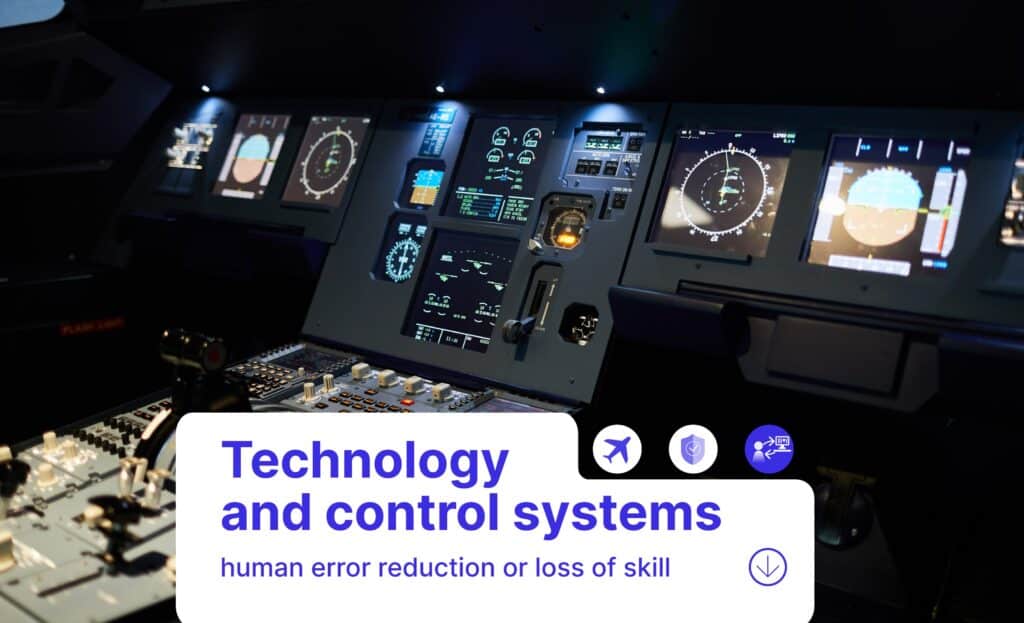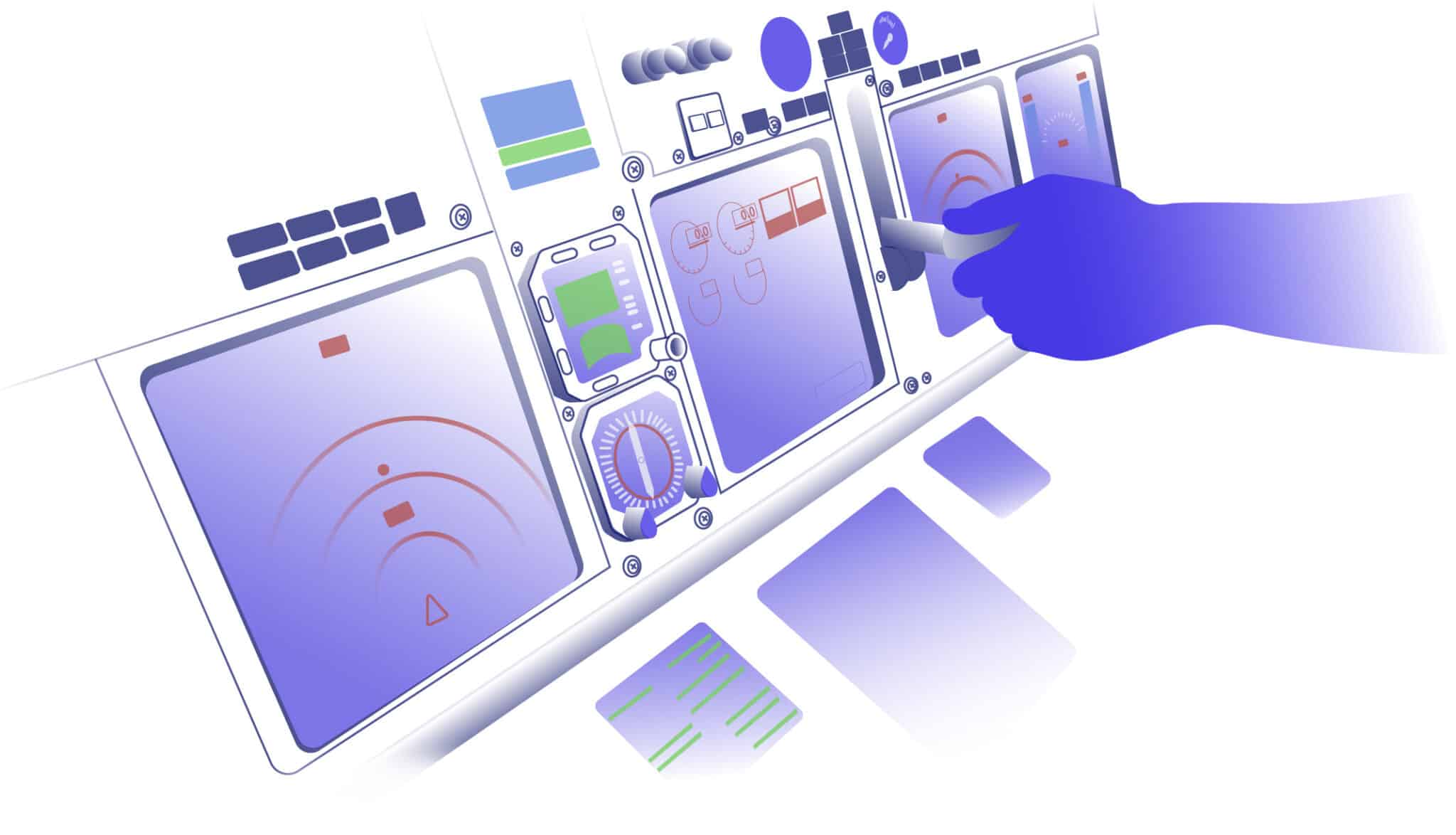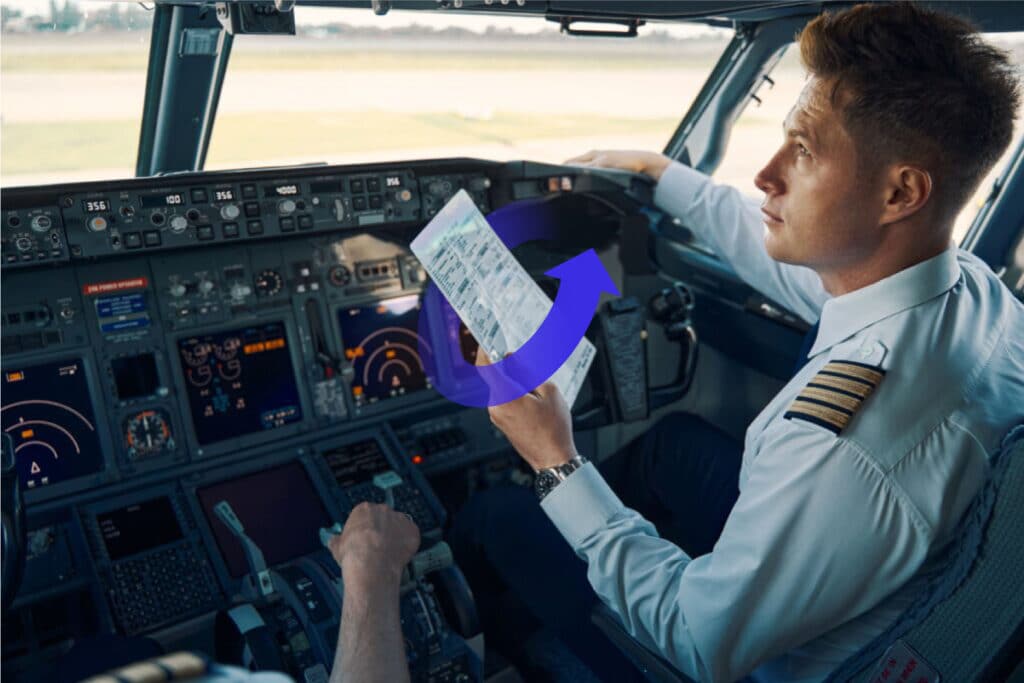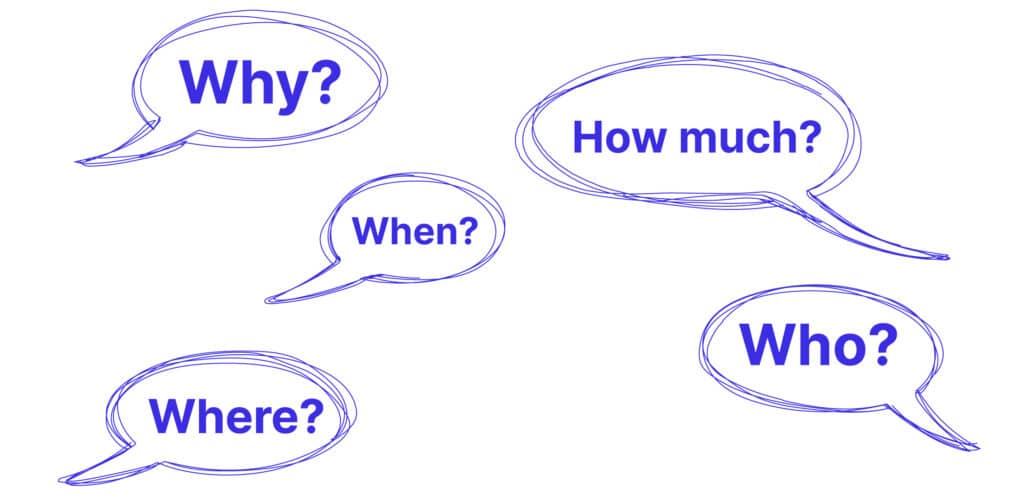
In the ever-evolving world of aviation, technology has played a pivotal role in transforming the flight deck. Automation, in particular, has emerged as a powerful tool, enhancing safety, efficiency, and precision in aviation operations.
So, why do crashes still happen?
Automation is dramatically changing the relationship between pilots, planes, and the environment in which they operate.
But are we adapting our behaviors in a way that can handle the increased level of automation? And what kind of behavior is it we need to adapt to, in order to follow along?
Discover all our aviation-related topics.
Flight automation is the utilization of different control systems and technologies that reduce the requirements of human interference.
Automation in aviation encompasses a range of systems and tools, from autopilots and navigation aids to advanced flight management systems. These technologies reduce pilot workload, improve decision-making, and enhance overall safety. However, as automation becomes more sophisticated, there is a growing concern regarding the potential complacency it can breed among pilots.
Clearly, we can argue for both dis- and advantages.
But we need to face the pace and determination of technology. Whether we want it or not – automation is going to happen.
And rightly so.

Flight automation has proven to be a revolutionary and crucial technological advancement that enhances operational safety and efficiency.
So, if you’re asking yourself, “To automate or not to automate”, – the answer will always be “to automate”.
The more important question is: How can we ensure pilots learn to interact appropriately with this increased level of automation?
30 years ago, technical failures in the flight deck were common, which all pilots would rectify with the correct actions. So, in that sense, the pilot was the backup system for technology.
What we see now is technology being backed up by another technology system, and the pilots are mainly monitoring that all the technological systems are doing their job. And they are doing their job – most of the time, anyway. One might even argue that both pilots in the cockpit become pilot monitoring.
Humans are quite good at problem-solving and creative thinking, but humans are not good at “just” monitoring. This is, of course, problematic as we’re moving towards more and more monitoring in the flight deck. So, how do we then tackle this problem?
We could instruct pilots to do more manual flying to keep their flying skills high or train pilots on their technical skills in the simulators – which we are already doing.
But as mentioned earlier, technological development is going fast and furious forward – and it’s not going towards more manual flying. So, I would argue that we’re two pilots in the flight deck monitoring, and this is where we need to place our training focus – in the pilot monitoring part.
As pilots increasingly take the position of checkers rather than performers, complacency becomes one of technology’s greatest dangers. When we don’t fully understand the technology behind the system we’re monitoring, the risk of latent failures becomes even higher.
Consider this statement: “You have to know what you’re monitoring and how to monitor before you can effectively challenge something that puzzles you”.
So, how does one become a good pilot monitoring?
During a simulator session, freeze the simulator and blank the screens; ask the crew to turn around and hand them a piece of paper with questions like:
The aim is not to blame the pilots if they cannot give the correct answers. Instead, it should serve as an eye-opener and a tool to engage pilots in a discussion about the importance and difficulties of monitoring.
Now, I don’t believe it’s essential to know at all times what the indicated airspeed is during the cruise, for instance. I’d be placing my effort into knowing how big a buffer I have to maximize operating speed and minimum maneuver speed; seeing the big picture will maintain good situational awareness, and it is more important than knowing the exact airspeed.
So again, the aim of this exercise is not to correct or blame but to create a platform for pilots to discuss when, how, and what to monitor.
I have done a few experiments myself whilst flying; once in a while, when the cabin attendant comes into the cockpit and I turn around, I ask myself a few of these questions just before I turn around again to look at the instruments. And I wouldn’t always grant myself an A+.

At some stages of flight, it’s very easy to do our jobs as pilot monitoring. It’s relatively easy to challenge because someone has already decided when I need to speak up. For instance, it is clearly stated in my standard operating procedures (SOP) that I shall call out “speed” if the speed during approach deviates from more than +20 knots or more than -5 knots. So, I just follow the rules when I speak up – that’s easy.
But what about the times when I need to speak up, but there’s no clue in the SOP as to what I should say and how I should say it?
Which communicative tool can I use to catch the attention of my colleague?
In one study, the investigation team looked at 37 fatal accidents in which the flight crew was cited as the main contributing factor. They found that in most of these flights, the captain was the pilot flying. Actually, as much as 80% of the flights were flown by the captain. So, initially, it would seem that captains are poorer pilots than the first officers. But another truth emerges when examining closer.
The investigation team found that the first officer was aware of the problem but couldn’t communicate this properly to the captain. It seems much easier for the captains to challenge and speak up to the first officer than vice versa.
So, crews should be taught to be clear and direct in their error challenges. However, the demand for masterly explicitness and directness underestimates the essential role that social considerations play in human interactions.
Here’s a quote from a study by the Georgia Institute of Technology:
“Superiors, by virtue of their social status, may be licensed to give direct commands to their subordinates. If subordinates use the same linguistic strategy, however, superiors may perceive them as threatening or rude or refuse to comply.”
“The real task is not so much teaching first officers how to talk like a captain as much as it is teaching crews to talk like a team. We have to get crews to appeal to solving problems as joint tasks. It needs to be understood that the challenge is not correcting an individual, but we have a problem, and we have to deal with it.”

Which communicative tool do we then have to talk like a team? And how do we challenge without correcting the individual?
Questions!
And more specifically, open questions.
Imagine sitting on your couch watching TV, another breathtaking Barnaby’s thriller, trying to figure out who the murderer is. Then someone asks, “Did you put gas on the car”? And you answer “yes” but realize later that you didn’t really hear the question; you may have given a wrong answer.
Your focus is on watching Barnaby, and that type of closed question to which you can answer with a yes or no doesn’t steer your focus in another direction.
But imagine that person had asked you, “How much gas did you put on the car?”
To answer that open question, you would have to create a picture in your mind to remember how much gas you put in the car. In doing so, you would have no option but to remove your focus from the TV to answer the question.
An open question engages the mind and has the power to move your attention from the TV and destroy the fixation. There’s no escape route – you have to think and listen to the question to answer.
Now, I brought up an example of a thriller on TV to illustrate what fixation can do. But let’s bring that scenario into the cockpit. Every pilot has been in a situation where they found it difficult to challenge and spent a few extra seconds thinking about how to voice their concern.
So, here’s my statement from before: “You have to know what you are monitoring and how to monitor before you can effectively challenge something that puzzles you. ”
Allow me to add: “You have to know HOW to challenge before you can effectively challenge”.
Automation is here to stay, and there is no stopping it.
Manual flying is all very good, but in traffic-dense areas with continuous descent, angle-approach speed control, lever fiction, and call-outs, that would make the pilot monitoring so busy that they would lose their monitoring function because of the risk of being overloaded. So, the option of more manual flying has been somewhat diminished. Hence, the role of monitoring is highly significant.
Can we create SOPs for every possible scenario? No.
But we can train crews in the power of open questioning to pass on their interpretations when monitoring.
How?
By integrating better and more powerful Crew Resource Management courses.
In closing, I would urge you to try it out in your everyday life, in the cockpit, and between colleagues. Think actively about replacing a closed question with an open one and see what it brings you.
Why not?
Dive into our insightful and informative articles that will help you explore more and get ahead of the competition.
© 2024 NaviMinds – Designed by Aveo web&marketing